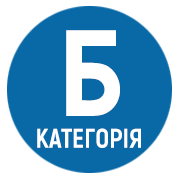FOREIGN AND DOMESTIC POLITICAL FACTORS OF THE HADIACH UN- ION: UKRAINIAN CIRCUMSTANCES, PREREQUISITES, REASONS (AUGUST 1657 – SEPTEMBER 1658)
DOI:
https://doi.org/10.33402/up.2022-15-5-34Keywords:
Ukraine, Poland, Zaporizhzhia Army/Host, Ivan Vyhovskyi, Ukrainian CossacksAbstract
The article explains the reasons for concluding the Hadiach agreement in Ukraine. The general state of research and sources for studying the issue are characterized. The article explains the main reasons why the Zaporizhzhia Army retreated from the Pereyaslav Treaty of 1654 by signing the Hadiach Union with the Polish-Lithuanian Commonwealth. The circumstances in which the Cossack state found itself after the death of Bohdan Khmelnytskyi, and its status, as it was perceived in the world during the years of the hetmanship of Ivan Vyhovskyi, are characterized. The formation of a community of like-minded people among the Cossack elite is analyzed. The intentions, plans, and actions of the Muscovite state and internal factors that caused the formation of a pro-Polish orientation among the top Cossack officers were tracked. It is explained what the main reasons were for the willingness of the Cossack political elites to negotiate the restoration of peace and alliance with Poland.After the death of Bohdan Khmelnytskyi, some difficult circumstances and challenges required the strengthening of the Cossack state. Although the Zaporizhzhia Army was formed and established itself as a state-army, it could not assert its independence under the circumstances of the time. Khmelnytskyiʼs successor Ivan Vyhovskyi, who was formed as a political figure during the Khmelnytskyi period, as a capable organizer managed to ensure the formation of a community of like-minded people among the Cossack elite. The consolidation of the leadership of the Cossack state was facilitated by the exposure of the intentions of the Moscow state, which introduced the principle of «divide and rule» both in Ukrainian affairs in foreign policy and Europe, and in its policy regarding the gradual incorporation of Ukraine by strengthening social antagonisms and political conflicts and other contradictions, an important tool the provision of what was supposed to be the introduction of the troops of the Muscovite kingdom into Ukraine. The Kremlinʼs gross violation of the terms of the Pereyaslav Agreement of 1654 and Moscowʼs active attack on the freedom of the Ukrainian Cossacks caused their resistance and the formation of a pro-Polish orientation among the top Cossack elders. The positive attitude of the leadership of the Orthodox Church in Ukraine to the idea of the union of the Cossack state with Poland was also of great impor- tance for the political rapprochement of the Zaporizhzhia Army with the Polish-Lithuanian Commonwealth. The Kremlinʼs attack on the rights and freedom of the Ukrainian Cossacks caused a readiness among some of the Cossack elites for negotiations on the restoration of peace and alliance with Poland. In the end, the negotiations on the conclusion of an under- standing between Ukraine and Poland in the form of the Hadiach Union became one of the consequences and one of the forms of resistance to the Kremlinʼs attack on the freedom and rights of the Zaporizhzhia Army.
References
Chentsova, V. H. (2004). Vostochnaia tserkov i Rossiia posle Pereiaslavskoi rady 1654–1658. Dokumenty. Moscow: Gumanytarii [in Russian].
Chukhlib, T. (2009). Kozaky i Monarkhy. Mizhnarodni vidnosyny ranniomodernoi Ukrainskoi derzhavy 1648–1721 rr. (3rd ed.). Kyiv: Vydavnytstvo imeni Oleny Telihy [in Ukrainian].
Chukhlib, T. (2015). Poniattia «Ukraina» ta «Ukrainnyi» v ofitsiinomu dyskursi Viiska Zaporozkoho (1649–1659 rr.). Ukraina v Tsentralno-Skhidnii Yevropi, 15, 41–79 [in Ukrainian].
Chynczewska-Hennel, T. (1985). Świadomość narodowa szlachty ukraińskiej i kozaczyzny od schyłku XVI do połowy XVII w. Warsaw: Panstwowe Wydaw. Naukowe [in Polish].
Dashkevych, Ya. (1990). Hetmanska Ukraina: polky. Polkovnyky. Sotni. Pamiatky Ukrainy, 1, 11–13; 2, 18–20 [in Ukrainian].
Floria, B. (2010). Russkoe gosudarstvo i yeho zapadnyie sosedi (1655–1661 gg.). Moscow: Indrik [in Russian].
Franz, M. (2008). Unia hadziacka – idea i marzenia. In T. Chynczewska-Hennel, P. Kroll, M. Nagielski (Eds.), 350-lecie Unii Hadziackiej (1658–2008) (pp. 155–167). Warsaw [in Polish].
Gajecky, G. (1978). The Cossack Administration of the Hetmanate (Vol.1, 2). Cambridge, Mass.: Harvard Ukrainian Research Institute [in Ukrainian].
Gawroński, F. (1907). Poselstwo Bieniewskiego: od śmierci B. Chmielnickiego do umowy Hadziackiej: próby pojednania z Rusią. Kraków: G. Gebethner i Sp. [Druk.W. L. Anczyca] [in Polish].
Hadiatska uhoda v konteksti polsko-ukrainskykh vidnosyn (2013). Zhytomyr [in Ukrainian].
Harasymchuk, V. (1994). Materialy do istorii kozachchyny XVII viku (Lvivski istorychni pratsi. Dzherela (Vol. 1)). Lviv [in Ukrainian].
Harasymchuk, V. I. (1909). Vyhovshchyna i Hadiatskyi traktat. Zapysky Naukovoho tovarystva imeni Tarasa Shevchenka (ZNTSh), 87, 5–34; 88, 23–40; 89, 46–71 [in Ukrainian].
Horobets, V. (2001). Elita kozatskoi Ukrainy v poshukakh politychnoi lehitymatsii: stosunky z Moskvoiu ta Varshavoiu, 1654–1665. Kyiv: Instytut istorii Ukrainy [in Ukrainian].
Hrushevskyi, M. (1958). Istoriia Ukrainy-Rusy v 10 t. (Vol. 10). (K. M. Hrushevska, Ed.). New York: Vydavnyche tovarystvo «Knyhospilka» [in Ukrainian].
Jerlicz, J. (1853). Latopisiec albo kroniczka... (Vol. 1). Warsaw: Maur. Wolff [in Polish].
Kaczmarczyk, J. (2007). Rzeczpospolita Trojga Narodów mit czy rzeczywistość. Ugoda hadziacka – teoria i praktyka. Kraków: Księgarnia akademicka [in Polish].
Khavanova, O. V. (2007). V. Transilvanskoie kniazhestvo v period russko-polskoho konflikta iz-za Ukrainy v 50-e gody XVII v. In M. S. Meier (Ed.), Russkaia i ukrainskaia diplomatiia v mezhdunarodnykh otnosheniiakh v Yevrope serediny XVII v. (pp. 341–365). Moscow: Gumanitarii [in Russian].
[Kostomarov, N.] (1863). Hetmanstvo Vyhovskaho. In Istoricheskie monografii i issledovaniia Nikolaia Kostomarova (Vol. 2, pp. 327–424). Saint Petersburg: Izd. D. Ye. Kozhanchikova [in Russian].
Kowal, T. (2010). Unia hadziacka 1658 r. w oczach najnowszej historiografii polskiej i ukraińskiej. Retrieved from https://histmag.org/Unia-hadziacka-1658-r.-w- oczach-najnowszej-historiografii-polskiej-i-ukrainskiej-4185 [in Polish].
Kroll, P. (2008). Od ugody hadziackiej do Cudnowa. Kozaczyzna między Rze- cząpospolitą a Moskwą w latach 1658–1660. Warsaw: Wydawnictwa Uniwersytetu Warszawskiego [in Polish].
Kryvosheia, V. V. (2008). Kozatska elita Hetmanshchyny. Kyiv: IPiEND imeni I. F. Kurasa NAN Ukrainy [in Ukrainian].
Kubala, L. (1922). Wojny duńskie i pokój oliwski 1657–1660. Szkice historyczne (Ser. 6). Lviv [in Polish].
Malicki, J., & Zwiagina, A. (Eds.). (2018). Wielki projekt: 360 rocznica Unii Hadziackiej 1658–2018. Proceedings of the International Scientific Conference, Hadiach, 16 veresnia 2018. Warsaw [in Polish].
Mytsyk, Yu. (1999). Z dyplomatychnoi dokumentatsii B. Khmelnytskoho ta I. Vyhovskoho. Naukovi zapysky, 14, 93–112 [in Ukrainian].
Ossoliński, Ł. (2009). Rzecz o hetmanie Wyhowskim. Warsaw: Proszyński i S-ka [in Polish].
Pamiatniki, izdannyie Kievskoiu kommissieiu dlia razbora drevnikh aktov (1898). (2nd ed.). Kyiv [in Russian].
Pernal, A. (2013). Rich Pospolyta dvokh narodiv i Ukraina. Dyplomatychni vidnosyny 1648–1658. Kyiv: Vydavnychyi dim «Kyievo-Mohylianska Akademiia» [in Ukrainian].
Pernal, A. B. (2008). The Union of Hadiach (1658): Its Genesis, Terms and Significance. In P. Kroll (Ed.), 350-lecie Unii Hadziackiej (1658-2008) (pp. 43–52). Warsaw [in English].
Pernal, A. B. (2010). Rzeczpospolita Obojga Narodow a Ukraina. Stosynki dyplomatyczne w latach 1648–1659. Kraków: Księgarnia Akademicka [in Polish].
Revutskyi, S. (Comp.). (2009). Ivan Vyhovskyi: zbirnyk statei naukovoi konferentsii, prysviachenoi 350-littiu Hadiatskoi uhody. Lviv: Vyd-vo Natsionalnoho universytetu «Lvivska politekhnika» [in Ukrainian].
Rybałt, E. (2008). Przyczynek do ukraińskiej historiografii ugody hadziackiej z 1658 roku. In P. Kroll (Ed.), 350-lecie Unii Hadziackiej (1658-2008) (pp. 695–703). Warsaw [in Polish].
Sokhan, P. (Ed.). (2004). Universaly ukrainskykh hetmaniv vid Ivana Vyhovskoho do Ivana Samoilovycha (1657–1687). Kyiv; Lviv [in Ukrainian].
Sokhan, P., & Brekhunenko, V. (Eds.). (2008). Hadiatska uniia 1658 roku: zb. statei. Kyiv [in Ukrainian].
Soloviov, S. M. (1961). Istoriia Rossii s drevneishykh vremion. V piatnadtsati knigakh (B. V, Vols. IX–X). Moscow [in Russian].
Tazbir, J. (1984). Polityczne meandry Jerzego Niemirycza. Przegląd Historyczny, 1, 23–37 [in Polish].
Tazbir, J. (2008). Ugoda hadziacka jako utopia szlachecka. In P. Kroll (Ed.), 350-lecie Unii Hadziackiej (1658-2008) (pp. 23–34). Warsaw [in Polish].
Velychko, S. V. (1991). Litopys (V. O. Shevchuk, Trans., O. V. Myshanych, Ed.) (Vol. 2). Kyiv: Dnipro [in Ukrainian].
Yakovleva, T. (1998). Hetmanshchyna v druhii polovyni 50-kh rokiv XVII stolittia. Prychyny i pochatok Ruiny. Kyiv: Osnovy [in Ukrainian].
Yuha, O. A. (2016). Politychna elita Rechi Pospolytoi ta «ukrainska problema»: poshuk shliakhiv rozviazannia (1648 – persha polovyna 1659 rr.) [The political elite of the Polish-Lithuanian Commonwealth and the «Ukrainian problem»: the search for solutions (1648 – the first half of 1659)] (Candidate’s thesis). Kyiv [in Ukrainian].
Yuha, O. A. (2020). Dyskusii sered politychnoi elity Rechi Pospolytoi shchodo shliakhiv rozviazannia «ukrainskoi problemy» ta yikh naslidky (serpen 1657 – veresen 1658 rr.). Naukovi pratsi Kamianets-Podilskoho natsionalnoho universytetu imeni Ivana Ohiienka. Istorychni nauky, 30, 170–185. Retrieved from http://nbuv.gov.ua/UJRN/ Npkpnu_2020_30_14 [in Ukrainian].






